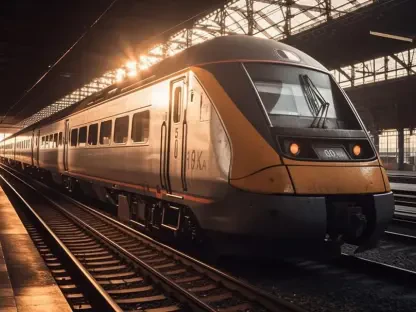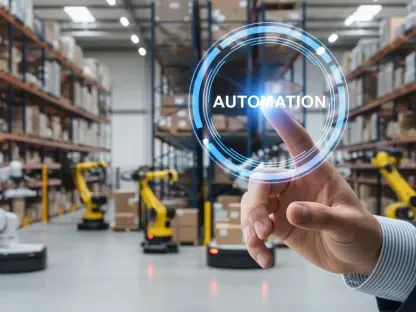As the urgency to reduce carbon emissions intensifies, the electric truck market is witnessing unprecedented growth driven by the transition from diesel to zero-emission powertrains. A critical component of this transformation is the design flexibility in developing and implementing electric drivetrains for commercial trucks. This flexibility is vital as it addresses the myriad challenges posed by battery-electric technology, ensuring that electric trucks can meet the diverse and demanding requirements of the transportation industry.
The Current State and Future Prospects of Electric Trucks
The global electric truck market, originally valued at US$2 billion in 2022, is projected to experience a tenfold increase by 2032, according to Precedence Research. Despite this promising growth outlook, original equipment manufacturers (OEMs) and carriers are confronted with significant challenges. Among these issues are the higher costs associated with battery-electric trucks, the reduced payload capacity compared to traditional diesel trucks, as well as shorter driving ranges and the necessity for new operational planning strategies. These limitations necessitate innovative solutions to strike a balance between the immediate requirement for zero-emission transportation and the practical constraints of existing technology.
To tackle these obstacles, innovative and flexible solutions are paramount. Manufacturers like Volvo Trucks have been at the forefront of these advancements, developing new technologies that push the boundaries of what electric trucks can achieve. The need to balance immediate emission reduction goals with the logistical realities of transportation networks necessitates a continual evolution of battery-electric driveline systems. This evolution is a critical component in propelling the market forward and ensuring that electric trucks can meet both current and future demands, enabling a smoother transition for the industry.
Advancements in Battery-Electric Truck Driveline Systems
Battery-electric truck driveline systems continue to evolve and show significant potential for further advancements. One notable innovation comes from Volvo Trucks, which has successfully developed and implemented e-axles. These e-axles have been instrumental in extending the range of electric trucks, a crucial factor in expanding their market suitability. The introduction of Volvo’s FH Electric truck in 2022 marked a milestone in this journey. This truck, capable of handling a gross combination weight of 44 tonnes, boasted up to 490kW of power and a 300km range. However, its primary application remains in short- and medium-haul routes, which limits its broader market adoption.
Volvo’s technological advancements highlight the ongoing efforts to push the capabilities of electric trucks. By integrating driveline components into the axle structure, eliminating the need for a driveshaft, and conserving space for additional batteries, Volvo has been able to make significant strides. These innovations are vital in enhancing the overall performance and applicability of electric trucks, bringing them closer to matching the operational capabilities of their diesel counterparts. As battery-electric technology continues to develop, it holds the promise of even greater efficiencies and expanded range capacities, making electric trucks a more viable alternative for long-haul operations.
Volvo’s E-Axle Innovation and Range Extension
Volvo Trucks has not rested on its laurels after the introduction of the FH Electric. The company has announced plans to release a new design in September 2024, aimed explicitly at extending the range of the FH Electric to 400km or more, thus facilitating long-haul operations. The core of this innovation lies in the e-axles, which integrate driveline components directly into the axle structure itself. This integration eliminates the need for a traditional driveshaft, conserving valuable space that can be repurposed for additional batteries.
These additional batteries are crucial for increasing the truck’s range. Volvo’s new model will see an increase from six to eight batteries, complemented by improvements in lithium-ion batteries that significantly enhance energy density. As a result, the new FH Electric model is expected to achieve a 600km range on a single charge, doubling the capability of its predecessor. This significant boost underscores the potential of innovative, flexible drivetrain technologies in overcoming the current limitations of battery-electric trucks, paving the way for their broader adoption across various market segments.
The Necessity for Diverse Approaches to Zero-Emission Powertrains
The transportation industry is acutely aware of the necessity for diverse approaches when transitioning to zero-emission powertrains. Not all manufacturers have the resources of a company like Volvo to develop multiple technologies simultaneously. This realization has led to a growing emphasis on flexible solutions that can be incrementally adapted. Such an approach prevents the wholesale abandonment of existing internal combustion engine (ICE) platforms. Instead, manufacturers can implement incremental changes that ease the transition towards battery-electric models while ensuring operational continuity and maintaining profitability.
This layered approach acknowledges the industry’s constraints and provides a practical pathway to decarbonization. Manufacturers are continuously seeking solutions that do not just meet zero-emission requirements but also fit seamlessly into current operational frameworks. This strategy ensures that the transition to electric trucks does not disrupt business operations and that companies remain competitive as the market shifts. The gradual integration of electric drivetrains into existing platforms exemplifies this pragmatic approach, allowing for a smoother overall transition.
ZF’s Flexible Drivetrain Design
Winfried Gründler, Senior Vice President for Driveline Technology at ZF Commercial Vehicle Solutions, has consistently highlighted the industry’s transitional state. At present, no immediate alternative fully replicates the performance and range of ICE trucks. To navigate this transitional period effectively, ZF emphasizes the necessity of flexibility in drivetrain design. In September 2024, ZF unveiled the CeTrax 2 dual, an electric central drive system specifically designed to fit into existing truck platforms with minimal modifications. This system delivers 380kW of continuous power, integrates two 800V silicon carbide inverters, and includes a three-speed gearbox, establishing a new benchmark for flexibility and efficiency in electric drivetrains.
ZF’s innovation represents a practical approach to electric drivetrain design that aligns with the industry’s current needs. By developing systems that integrate seamlessly into existing platforms, ZF ensures that the transition to electric models can occur with minimal disruption. This flexibility is paramount in an industry as diverse as commercial trucking, where the range of applications and operational requirements is vast. The CeTrax 2 dual exemplifies how innovative design can provide robust solutions that facilitate a smooth and efficient transition to zero-emission transportation.
Ford Trucks and the CeTrax 2 Dual
Ford Trucks will be the first manufacturer to incorporate the CeTrax 2 dual into its Electric Rigid Truck model. This collaboration between Ford and ZF underscores the importance of flexible drivetrain technologies in the current landscape. By the end of 2025, ZF anticipates a significant ramp-up in e-drive production for commercial vehicles. This expansion is expected to be most pronounced in Asia-Pacific and North American markets, regions where the diversity of commercial vehicle usage presents unique challenges to a complete and quick shift to battery-electric models.
The adoption of the CeTrax 2 dual demonstrates the industry’s commitment to achieving zero-emission goals while recognizing the need for technological flexibility. Ford’s integration of this system is a testament to the industry’s strategic approach to electric vehicle deployment. The collaboration also highlights the necessity of partnerships in fostering innovation and ensuring the successful transition of commercial fleets to electric drivetrains. As manufacturers continue to adopt flexible systems like the CeTrax 2 dual, the collective progress toward a more sustainable transportation future is further accelerated.
Tailored Approaches to Electric Truck Deployment
A tailored approach to electric truck deployment is essential for optimizing the benefits of battery-electric technology. Different use cases and transport assignments require specific configurations, ensuring trucks are not overloaded with unnecessary battery capacity. Volvo Trucks, for instance, aims to collaborate closely with customers to identify the most suitable setups for their operational needs. By emphasizing market receptivity and flexibility, Volvo ensures its electric trucks meet the precise requirements of diverse applications, enhancing overall efficiency and satisfaction.
This customer-centric approach aligns with ZF’s introduction of versatile drivetrain solutions. ZF’s designs cater to distinct trucking applications and business objectives, enabling a smoother transition to zero-emission transportation. Both companies recognize that a one-size-fits-all solution is impractical in the complex landscape of commercial trucking. Instead, they focus on creating adaptable and efficient systems that address specific needs, fostering a more practical and effective shift to electric trucks.
The Role of Flexible and Adaptable Systems
As the urgency to reduce carbon emissions increases, the electric truck market is experiencing exceptional growth, driven by the shift from diesel to zero-emission powertrains. This rapid advancement is crucial in the battle against climate change and is being propelled by innovations in the design and implementation of electric drivetrains for commercial trucks.
The flexibility in developing these electric drivetrains is essential, as it allows for diverse solutions to the numerous challenges posed by battery-electric technology. Whether it’s addressing range anxiety, charging infrastructure, or load capacity, adaptable electric drivetrains ensure that electric trucks can meet the varied and demanding needs of the transportation industry. These innovations not only help in achieving environmental goals but also ensure efficiency and reliability, making electric trucks a viable alternative to their diesel counterparts.
In this way, the transportation sector can continue to function effectively while significantly reducing its carbon footprint, responding to the global call for a greener future.









